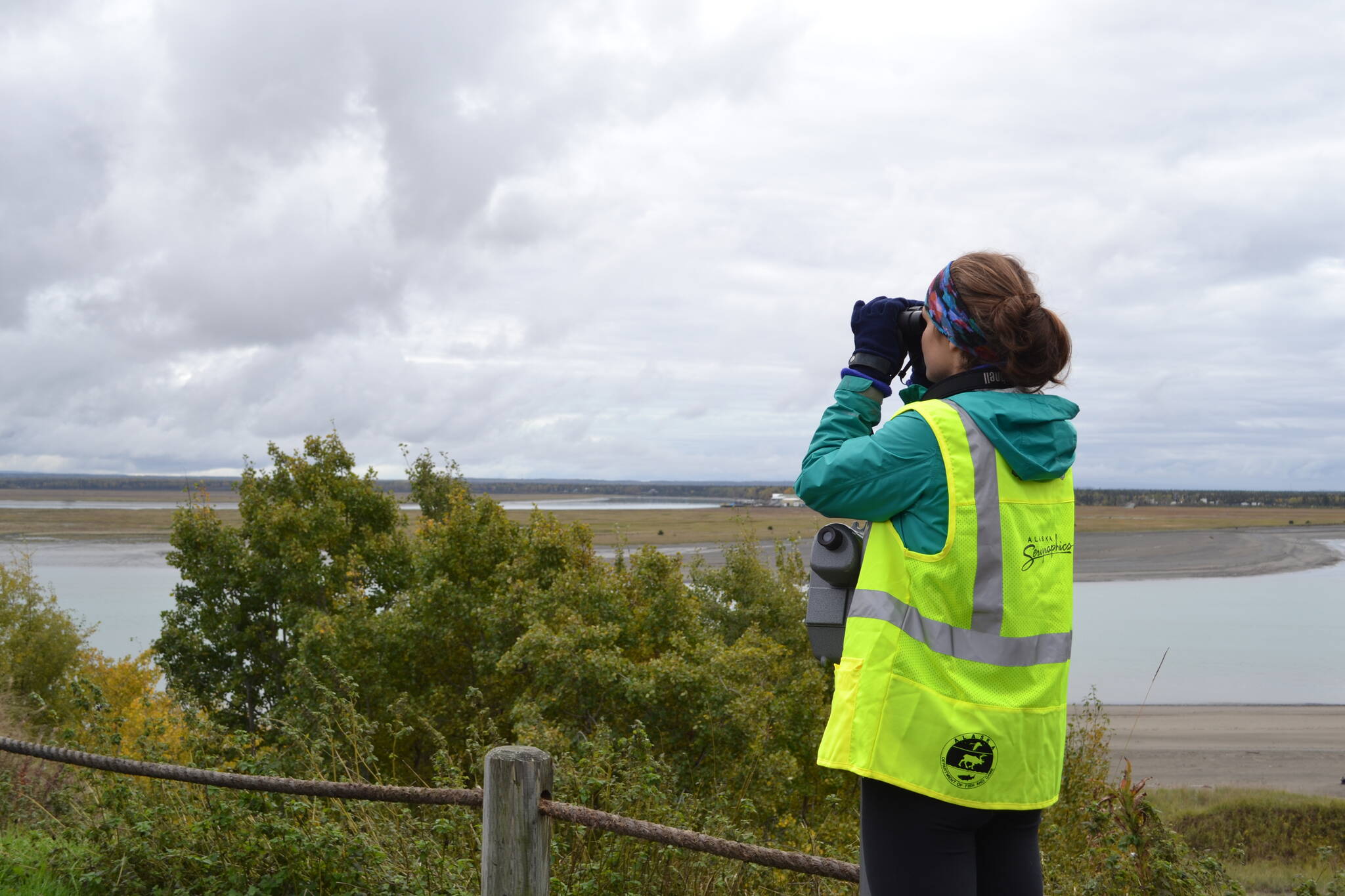After two years of cancellations, the National Oceanic and Atmospheric Administration’s Alaska Regional Office on Saturday will host the 2022 Belugas Count!
Belugas Count!, as described by a press release, is an event to educate about the beluga population in Cook Inlet by inviting the public to help spot and count the endangered mammals.
Jill Seymour, NOAA’s recovery coordinator for the Cook Inlet belugas, said that the event is “an opportunity to get to talk to and interact with Cook Inlet beluga experts from across the country.”
Seymour said attendees will help experts look for and document beluga sightings.
The event is geared toward families, especially those with children. Sticker sheets for kids will be offered.
“We’d love to see whole families come out,” Seymour said. “Rain or shine.”
She said it’s important for adults and children to learn about the beluga population because the population is entirely unique to the Cook Inlet. The Cook Inlet belugas are endangered, and if they disappear, it is unlikely that any other population of the whales will recolonize.
For the event, 14 viewing stations will be set up throughout Cook Inlet. Each station will be staffed by beluga experts from NOAA and other organizations. Hours of operation were selected to coincide with the likeliest time to see belugas.
A station will be operated at the bluff overlook down Spur View Drive by the Kenai Senior Center from 9 a.m. to 1 p.m. The site is wheelchair accessible and signs will be posted.
Seymour said the Kenai station is going to be staffed with professionals from the Alaska Wildlife Alliance, Kenai Peninsula College, Georgia Aquarium and the Shedd Aquarium in Chicago.
The Kenai River has been relatively active recently, Seymour said, and should be a great spot to see the belugas on Saturday.
Another station will be based in Homer, at the Baycrest Overlook around Milepost 169.5 of the Sterling Highway. This station will only be open from noon to 2 p.m. and is also wheelchair accessible.
There are also stations near Hope, Portage, Girdwood and Tyonek. A couple of stations are located on the Seward Highway, and there are four in Anchorage. Several Hilcorp platforms — as well as one with Glacier Oil and Gas — will also be official counting stations, though these are inaccessible to the public.
The press release says attendees should bring their own binoculars and cameras. Attendance is free and open to the public without reservation.
Those without access to binoculars and cameras will likely still be able to get a lot from the event, Seymour said, especially at the Kenai station which is right above the Kenai River.
Prior to the pandemic, binoculars could have been shared, but Seymour said that restriction was one of the concessions that had to be made to ensure the safe return of the event.
She also said that social distancing is encouraged, and asked individuals to further distance or mask up if there are masked individuals attending.
According to NOAA, there are five populations of beluga whales in Alaska. The Cook Inlet population is the smallest, and the only one to be registered as endangered. Cook Inlet belugas were identified as endangered in 2008 and have been designated by the agency as a “Species in the Spotlight” since 2015.
Seymour said the Species in the Spotlight program, which identifies endangered or threatened species with a path to recovery, has included the whales since its inception. She said scientists believe only 279 of the whales are left.
More information about the Belugas Count program can be found at “Belugas Count” on Facebook.
Update: Additional information has been added to this story concerning experts on location at the Kenai viewing station, as well as oil platforms hosting counting stations.
Reach reporter Jake Dye at jacob.dye@peninsulaclarion.com.

